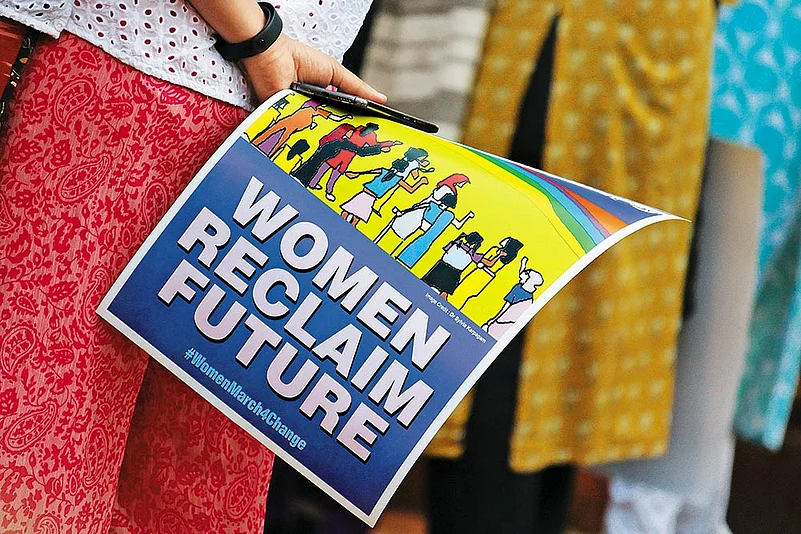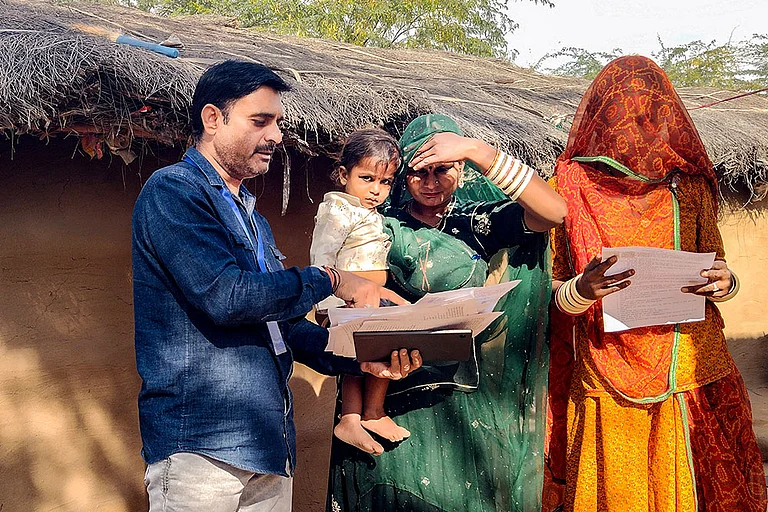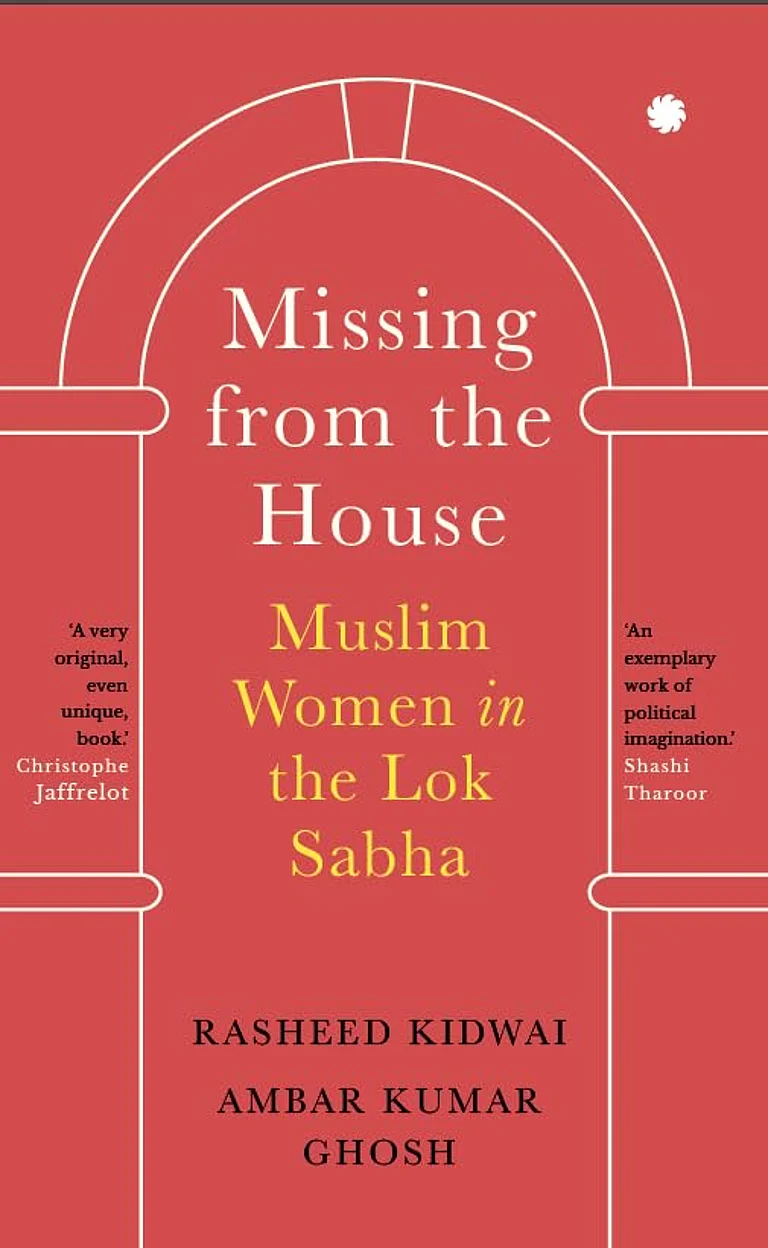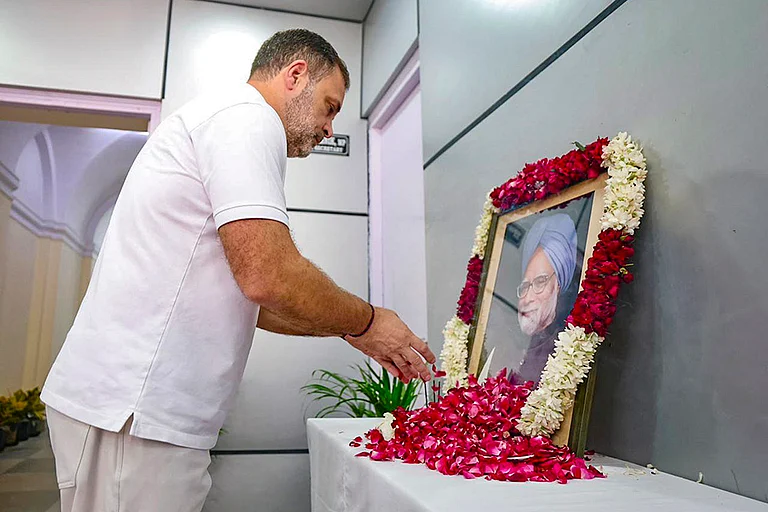
This story was first published on 20 March 2024. It is being re-plugged again in light of the first session of the 18th Lok Sabha that began on June 24. This time, 74 women MPs are part of the lower house, a marginal decrease from 78 MPs in the previous Lok Sabha. The recently-concluded election was the first vote conducted after the passage of the Women's Reservation Bill in the Lok Sabha. The bill is yet to come into effect.
Ahead of the 2024 Lok Sabha elections, 39-year-old domestic worker Usha Ranjith has a decision to make. Usha, a Malda native residing in Delhi for ten years, admires Mamata Banerjee’s leadership and her initiatives for women. However, she recognises that Lok Sabha elections determine the prime minister. “As a migrant worker, the policies of the Centre impact me as much as state policies, sometimes even more,” Usha says.
As a mother of two, Usha juggles her household duties and job and keeps herself informed about welfare schemes and freebies offered to women, while monitoring political developments in her hometown. “It’s Didi versus Modi in Bengal this time,” she says, without disclosing which side she is on.
Ranjith is one of the 47 crore women eligible to vote in the upcoming 2024 Lok Sabha elections, making her part of one of the biggest political ‘vote banks’ to emerge this year. 14.1 million first-time women voters are eligible to vote in the upcoming Lok Sabha elections in India this year. That is 15 per cent more than the number of new male voters. State Bank of India’s Economic Research Department (ERD) report has projected women voter turnout this year to be approximately 33 crore, which is 49 per cent of the total voters. After 2029, the report projects that at nearly 37 crore, women voters could outnumber registered male voters, whose count is pegged at around 36 crore.
How has the quantum of women’s vote increased? And how does it impact elections?
Assembly elections in 23 states over the last five years saw the women voter turnout significantly rise above its male counterpart in 18 states where polls were held. The 2022 Uttarakhand elections, which the BJP won, saw 67.2 per cent female voters as opposed to 62.6 per cent male voters. As many as 80.96 per cent women voted in the 2022 Goa elections, as opposed to 78.19 per cent male voters. In Manipur, too, the 2022 state elections saw female voters exceed male voters by 10 per cent. In Uttar Pradesh, there was an uptick in women voters who outnumbered males in three out of six polling phases. The 2019 Lok Sabha elections registered a 5.1 per cent increase in women voters and the trends are going up.
Women have played decisive roles in state elections earlier too, as seen in Bihar in 2020, where Nitish Kumar’s victory was largely attributed to women voters supporting his prohibition policies. This marked the third instance of women outnumbering men at the polls, reflecting their concerns over alcoholism’s link to domestic abuse, a pervasive issue affecting women nationwide.
“Over the years, women have voted in large numbers from time to time over certain issues,” political commentator and senior journalist Neerja Chowdhury says. “In contrast to these sporadic trends earlier, women are increasingly emerging as a more substantial and homogenous vote bank today,” she adds.
14.1 million first-time women voters are eligible to vote in the upcoming Lok Sabha elections in India this year. That is 15 per cent more than the number of new male voters.
While caste, class, and community continue to be relevant, Chowdhury notes that the ever-growing list of welfare-focused policies and sops, including free travel, gas subsidies and ‘freebies’ is testament to the growing importance of women as a political category. Sure enough, in the run-up to the elections, women increasingly figure in poll pitches and campaign rallies of both the Bharatiya Janata Party (BJP) and Opposition parties.
With an eye on the polls, PM Modi on International Women’s Day announced a reduction in the price of liquefied natural gas (LPG) by Rs 100 under the ‘Ujjwala Yojana’ as a “gift” to women. Citing a host of women-centric schemes by the government during a ‘Sashakt Nari-Viksit Bharat’ programme, the PM also disbursed Rs 8,000 crore in bank loans to self-help groups (SHGs). The party has been conducting massive outreach programmes on the ground to map out strategies to woo women voters and identify their issues, sources close to the party told Outlook.
In the BJP’s 2023 assembly election manifesto in Madhya Pradesh, the party listed providing LPG cylinders at Rs 450, retention of the ‘Laadli Behna’ scheme, and free education to girls among its key promises. In Chhattisgarh, it promised sops for married women along with LPG cylinders at Rs 500.
The Congress has also been banking on the women’s vote. Following ‘Yuva Nyay’, party leader Rahul Gandhi recently unveiled five pledges under its ‘Mahila Nyay’ guarantees, including granting Rs 1 lakh annually to impoverished women and ensuring 50 per cent reservation in government jobs if the Congress comes to power. The party has also promised to double the Centre’s budgetary allocation for women working in ASHA, Anganwadi, and mid-day meal schemes, among others, to counter the Modi government’s ‘populist welfarism’.
Meanwhile in West Bengal, the TMC government on March 6 increased the remuneration of ASHA and Anganwadi workers by Rs 750 monthly. The Aam Aadmi Party (AAP) and the Congress have emphasised the focus on women by factoring the aspect into budgetary outlays in the states they govern.
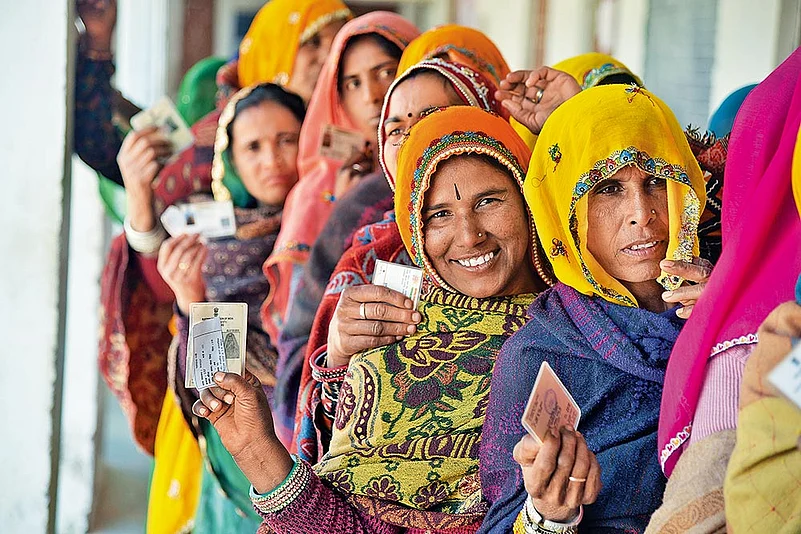
The Aam Admi Party government in Delhi provides Rs 1,000 per month to women above the age of 18 in the national capital under the ‘Mukhyamantri Mahila Samman Yojana’ scheme. Congress leader and Himachal Pradesh CM Sukhwinder Singh Sukhu has assured a monthly financial assistance of Rs 1,500 for women aged 18-60 under the ‘Indira Gandhi Pyari Behna Sukh Samman Nidhi Yojana’ scheme. This was part of the ten guarantees that the Congress promised in its legislative assembly election campaign in late 2022.
But are women really impressed by these sops and freebies? Chowdhury emphasises that even seemingly small initiatives like free bus rides can significantly empower women by enhancing their mobility, safety, and overall quality of life. “Back in her day, Jayalalithaa used to give free mixer grinders to women. It may be a freebie, but if it allows a woman to manage household chores faster and frees up her time for other economic or social activities, it is empowering for her,” Chowdhury points out.
Competitive populism benefits women more, but there’s still a disparity between women as policy beneficiaries and as policy shapers, with low female representation in politics at all levels.
Without reservation and the will to promote the active presence of women in the political domain, the fate of women, both as voters and leaders, continues to stay in the hands of male-dominated systems.
Out of the total 542 members of the current Lok Sabha, 78 are women, while there are only 24 women MPs among the 224 Rajya Sabha members. As per Election Commission of India (ECI) data, only nine per cent (418) of the total MPs/MLAs across the country are women.
“We had an opportunity to fix this problem with the Women’s Reservation Bill (2023),” says Congress leader Alka Lamba. She claims that the BJP used the women’s reservation bill as a political ploy, passing it in Parliament, but delaying its implementation until delimitation is completed, potentially postponing women’s representation until 2034. The Congress, she says, would ensure women’s reservation by 2024 itself, if the party comes to power.
Countering Lamba’s allegations, former Uttarakhand Governor and UP cabinet minister, BJP’s Baby Rani Maurya, states that Opposition parties just want to scramble gains made by the BJP on the women’s empowerment front.
“Opposition parties want to politicise reservations, but first let them bring women to the House. How many women leaders do SP (Samajwadi Party) or (Bahujan Samaj Party) BSP have? How many of their MLAs are women?” asks the Agra (rural) MLA, adding that the BJP has a high number of women legislators. She also credited the ruling party for appointing the highest number of women as governors.
“Today a tribal woman is president, a first for the nation and it happened during BJP rule. These people in opposition are not for supporting women, they just want to play politics over women,” Maurya says.
The BJP’s approach to sexual and gender-based violence cases has drawn scrutiny, with the Congress highlighting issues like wrestlers’ protests, Manipur sexual violence, the Bilkis Bano gangrape, and the Banaras Hindu University rape case to challenge the government’s ‘Nari Shakti’ narrative. “How can we talk about empowerment without first assuring basic safety for the daughters of India?” Lamba asks.
The question also weighs on the minds of women voters like Usha Ranjith and first-time voter Sukanya Ghosh, a resident of Noida. “For women to go out, whether for work or for education, proper lighting and CCTV coverage are essential. However, many areas in Delhi and the National Capital Region (NCR) lack these safety measures, making it frightening, especially at night,” says Ghosh, a third-year law student. Gender-based violence data has shown a disturbing increase in crimes against women over the past decade.
Analysis of other development indicators such as women’s employment and income reveals a concerning trend. The Female Labour Force Participation Rate (FLFPR) in India dropped from 27 per cent in 2012 to 22.9 per cent in 2021, only slightly increasing to 23.9 per cent in 2022. While initiatives like the ‘Beti Bachao Beti Padhao Yojana’ have aimed to address gender biases, debates persist over the underutilisation of funds. A report by the parliamentary committee on Empowerment of Women highlighted that a significant portion of funds allocated to the scheme was spent on media campaigns and advocacy rather than directly benefitting women.
MORE FROM THIS ISSUE
With rising turnout and a growing electorate, there has undoubtedly been a boom in women-centric schemes and policies. But without reservation and political will in parties to promote the active presence of women in the political domain, the fate of women, both as voters and leaders, continues to stay in the hands of male-dominated systems.
(This appeared in the print as 'The Female Factor')






